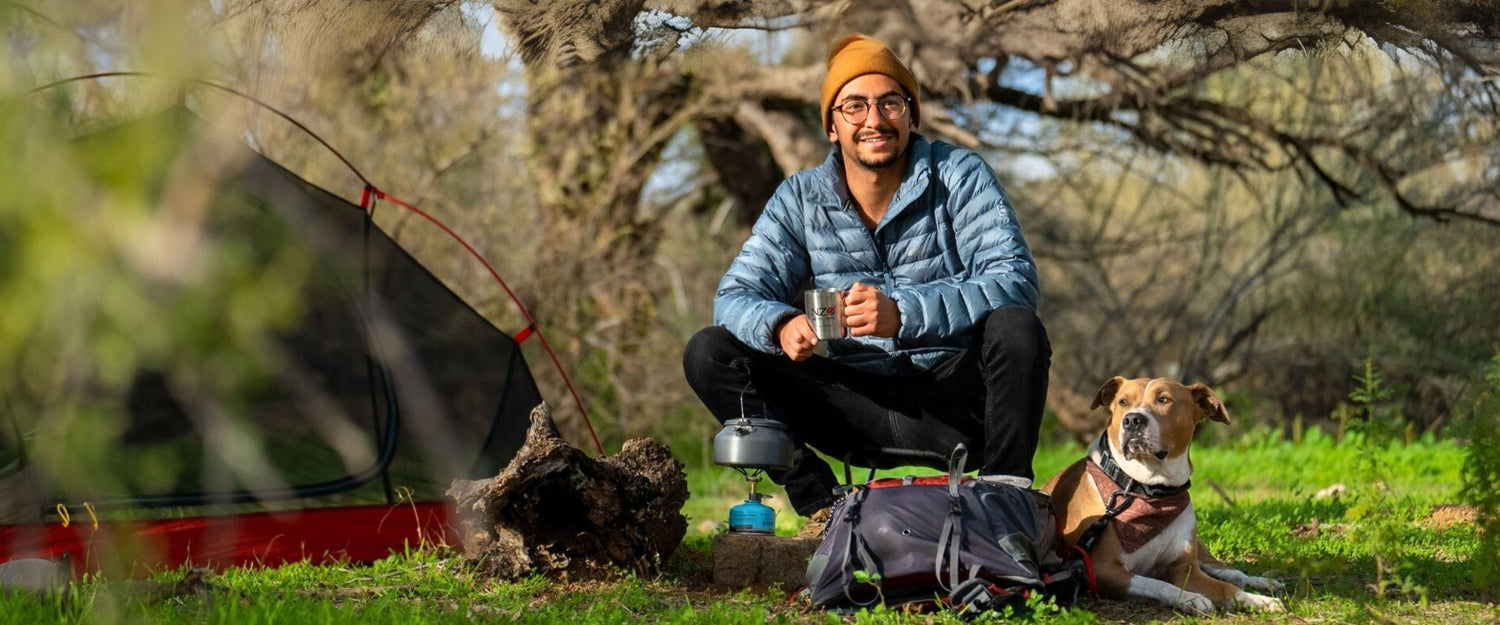
Train for the Trail: Getting in Shape for Backpacking in 2025
Share
As we enter 2025, there's no better time to start the New Year than by preparing for your next backpacking adventure. As you know, Near Zero's gear is lightweight, comfortable, and easy to use, but the one thing we don't offer is the endurance and muscle to take longer trails. However, we provide ways to help you build the strength, endurance, and agility to confidently tackle the trails this year.
1. Start with a Solid Foundation
Backpacking demands a combination of strength, endurance, and balance. Begin by assessing your current fitness level. To build a strong aerobic base, start with simple cardio exercises like walking, jogging, or cycling. Aim for at least 30 minutes, 3-5 times a week, gradually increasing intensity as your fitness improves. Don't get overwhelmed, and start where you can; Rome wasn't built in a day, and it'll take baby steps to get in shape.
Pro Tip: Incorporate hill walking or stair climbing into your routine to simulate the inclines you'll encounter on the trail.
2. Strengthen Your Core and Lower Body
When backpacking, your legs and core do the heavy lifting, so focus on building these areas, even if the gear isn't heavy.
- Squats: Build leg strength and stability. Start with bodyweight squats and progress to weighted ones.
- Lunges: Improve balance and strengthen muscles used for uphill climbs.
- Planks: Strengthen your core to help support your backpack and improve overall stability.
Pro Tip: If you don't have weights, add resistance bands or your own body weight to increase intensity as you progress.
3. Train with The DEAN
Nothing prepares you for carrying a loaded pack like practicing with one. Start with The Little DEAN 20L or just a few pieces of our Adventure Bundle in The DEAN 60L, and gradually increase the pieces over time.
4. Boost Your Cardiovascular Endurance
Trail days often mean long hours of walking, so improving stamina is essential. Incorporate longer cardio sessions, like brisk hikes, jogging, or swimming, into your week. Interval training can also help build the endurance needed for varied trail terrains.
Pro Tip: Alternate between high-intensity bursts (like sprinting) and steady-state cardio for a well-rounded workout.
5. Focus on Flexibility and Recovery
Flexibility reduces the risk of injury and helps your muscles recover faster. Add yoga or stretching routines to your weekly regimen to improve mobility and ease post-hike soreness.
Pro Tip: Foam rolling can help release tight muscles and prevent stiffness after intense training or hikes.
6. Simulate Real Trail Conditions
Get outside and hike! Training on actual trails helps you adapt to uneven surfaces, steep climbs, and descents. Use these hikes to break in new boots and refine your pacing.
Pro Tip: Gradually increase the length and difficulty of your hikes to avoid overexertion or injury.
7. Fuel Your Body for Success
Nutrition plays a critical role in training and backpacking. Focus on a balanced diet with plenty of protein, healthy fats, and complex carbohydrates to fuel your workouts and recovery. Stay hydrated, especially during outdoor training sessions.
Pro Tip: Practice eating the snacks and meals you plan to bring on the trail to ensure they are suitable for your energy needs and digestion.
8. Join a Community
Training with others can keep you motivated and make the process more enjoyable. Join local hiking groups, fitness classes, or online forums to connect with like-minded adventurers.
Pro Tip: Share your progress and goals with your community—their encouragement and advice can be invaluable!
Ready to Hit the Trails?
With the proper training and preparation, 2025 can be your best backpacking year yet. Start small, stay consistent, and remember that every step you take gets you closer to your next great adventure. With Near Zero's lightweight and durable gear, this goal is more than achievable. Happy trails!

